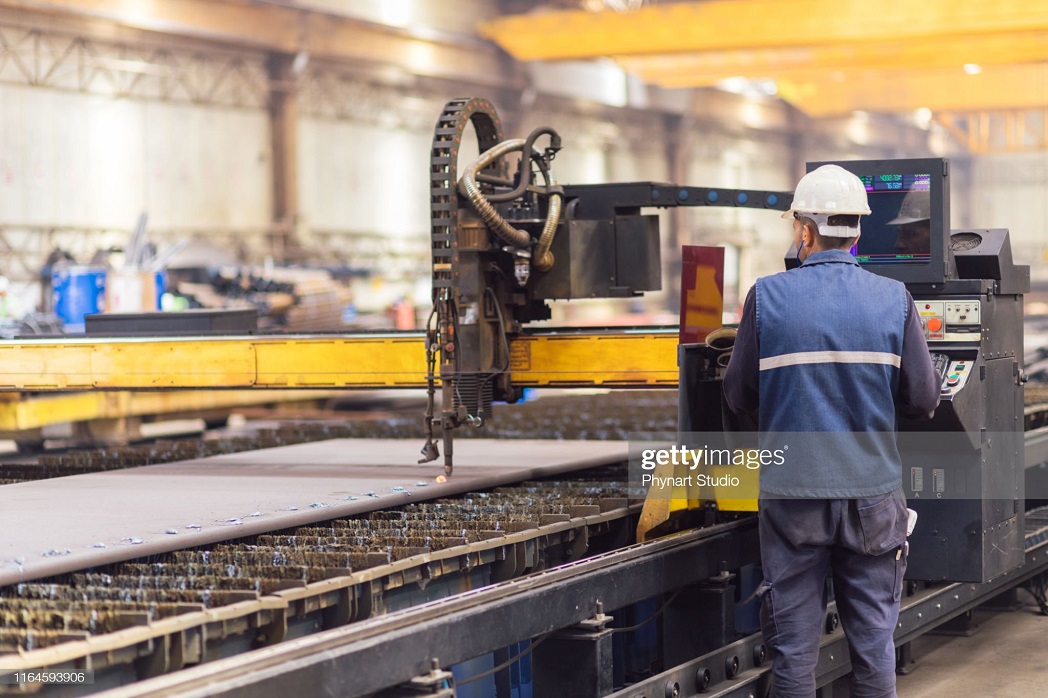How does tightening policy impact the labor market?
The current environment facing central banks is unlike that faced by them in the past and the consequence is that the path of policy will be different as well. One key area where things are very different this time is in the labour market.

Steel worker on CNC plasma cutter machine
>> How does the FED run its quantitative tightening?
For after a year of rising rates from the Fed, for a cumulative total of 450-bps, we might have expected some cracks to appear in the labour market. Not only have cracks failed to appear, but the last set of payroll data proved a real blockbuster at 517k.
We can also point to the fact that other advanced nations are seeing similar labour market trends – and many of them started tightening policy before the Fed. But cracks should start to show and, when they do, it could provide quite a fillip to bulls of the bond market – and bears of the dollar.
The post-Covid period has been one in which the labour market has changed dramatically, and possibly permanently. Hordes of workers have decided to quit the labour market. Some of this is down to the effects of ill health in the wake of the pandemic and some seems to be a lifestyle choice, particularly among those nearing retirement age. But whatever it is, it has left firms struggling to fill vacancies, and unemployment rates have mostly continued to fall.
For those policymakers who feel that, historically, policy tightening has had to produce higher unemployment in order to bear down on inflation, these trends must be of some concern. For others, who may feel – or hope – that historical precedents are not valid, the refusal of the unemployment rate to rise may be of less concern.
In the prior Fed tightening cycle, for instance, between 2015 and 2018 the unemployment rate actually fell from around 5% to under 4% as rates rose, and yet the Fed managed to snuff out any potential price threats. But while that looks a good omen, the key issue is that higher inflation in this period was only a threat, not a reality, as core CPI prices never rose more than 2.5% in annual terms.
Today, core CPI prices are more than double this rate at 5.6% and this would seem to suggest that the Fed has to make more inroads into weakening the labour market than it did last time. But can it do this if 450-bps of rate hikes and quantitative tightening have failed to do the trick so far?
Should payrolls rise strongly again this Friday (the consensus is around 200k at the moment), the market will assume that the Fed will have to go even harder with rate hikes and/or QT. But that’s not necessarily the case. Instead, Mr. Steve Barrow, Head of Standard Bank G10 Strategy suspects that the labour market will start to fall over even without additional tightening. This is because it seems that firms are hoarding labour and their ability and incentive to do so is disappearing. The fact that they are hoarding labour seems pretty clear if we look, for instance, at the trend in labour productivity. It stands to reason that if workers are largely standing idle as a consequence of labour hoarding by firms, productivity will fall, as it will across the country if other firms do the same thing.
>> When will the FED make the first move to cut rates?
As productivity falls so the cost of keeping on idle workers increases. That might not be too bad if firms’ profitability is high. But there are growing signs now that relatively high profit margins are starting to crack. So, not only are workers becoming more expensive; there may be fewer resources available to pay them.
“We think that this is likely to result in labour dishoarding and, moreover, we think that this could happen pretty abruptly. Of course, we don’t know when it might happen but we do feel that labour market surprises in the future are more likely to occur in terms of payroll data that’s below the consensus, with the unemployment rate more likely to spike higher than collapse from here. None of this will prevent the Fed taking policy rates up a bit more but, in our view, the idea that the Fed might have to take rate up much further, perhaps to 6-7% because of the tight labour market is pretty fanciful”, said Mr. Steve Barrow.








